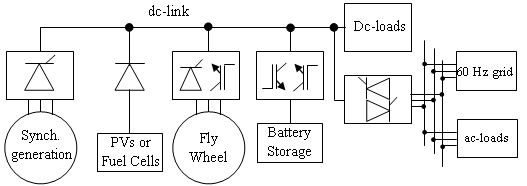The sustainable energy is a promising energy source that can give considerable additional energy when connected to the grid. One of the major projects in our energy systems research laboratory is to study how to optimize utilization of sustainable energy conversion systems. To realize this goal, different schemes was designed and implemented in order to test the performance for each scheme and to select the optimum conversion topologies and configurations which achieve the highest possible efficiency as well as power density.
Mathematical models for different conversion topologies were simulated. A voltage oriented control (VOC) scheme is utilized in order to control the energy to be injected into the grid. A method for solving the high power requirement in case of rating limitations of the available semiconductor power switches was tested, that employs parallel converters sharing one DC bus. For a uniform current distribution among the parallel converters, a Master-Slave control scheme was proposed and simulated.
The compensation of unbalanced voltage and harmonic voltage at the load side is achieved using a voltage source inverter connected to the grid through an injection transformer as a series voltage compensator is presented. The electrical connection of sources and loads can be done through a dc link, an ac link, or an HFAC link. The first and second integration link technologies were implemented in our lab.





